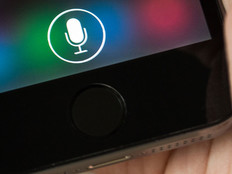Should Your Business Adopt Apple Pay Sooner Rather than Later?
When Apple made its big announcement about Apple Pay, its new mobile payments platform, in September at the iPhone 6 press event, the company made sure to mention the big-name retailers that would be using the new service. Just to name a few, the list included Walgreens, Macy’s and McDonald’s, making it clear that this was a big play for the big boys of retail.
But small and medium-sized businesses (SMBs) are actively exploring adoption of Apple Pay as well. It will require them purchasing near-field communication (NFC) payment terminals, but those can be acquired for less than $500, according to a recent post from The New York Times’ You’re the Boss blog.
For most small businesses, though, adopting Apple Pay should be pretty straightforward. There is no added fee from Apple on top of the credit card fees merchants already pay, but businesses will need to buy N.F.C. payment terminals. Donald Boeding, president of merchant services for Vantiv, a payment-processing firm in Cincinnati, said smaller businesses could buy the machines for $300 to $500.
The benefits of using Apple Pay are two-fold for SMBs. For starters, it future-proofs businesses from what is an obvious trend toward consumers using mobile devices as shopping tools. While the traditional cash register may not disappear, the potential for mobile technology to be used by a big chunk of the customer base is very strong.
Another benefit of moving to Apple Pay is the increased security that comes with using the standard. When BizTech recently spoke with Carolyn Balfany, MasterCard’s group head for U.S. product delivery, she explained that Apple Pay transactions are just as secure as those with the vaunted EMV chip credit cards that will be rolled out in the U.S. next year.
What Apple Pay effectively is, and what those mobile transactions are, are chip-grade transactions. So it’s really important for the consumers to know that the same level of security that is enjoyed in a chip transaction when you insert your card, the same technology is being used when an Apple Pay transaction is created.
With the EMV rollout coming up soon, along with a shift in liability from the credit companies to the merchants that will incentivize retailers to move to that system, it might make sense to make the switch now.
But talking about the theoretical use of Apple Pay and mobile payments is one thing. How does Apple Pay work in the real world?
BGR reports that Apple Pay astonishingly accounted for 1 percent of transactions at Whole Foods a mere three weeks after its launch.
Many SMBs are taking a wait and see approach. Mike Olafsson, owner of Pennsylvania toy retailer Monkey Fish Toys, said in a NerdWallet article that he was intrigued and interested in Apple Pay but would ultimately wait to see if consumer adoption turns out to be big enough to warrant the investment.
“Will I try it? Likely. Am I going to jump into it as a huge adopter? I want to definitely see how it plays out,” he said.









